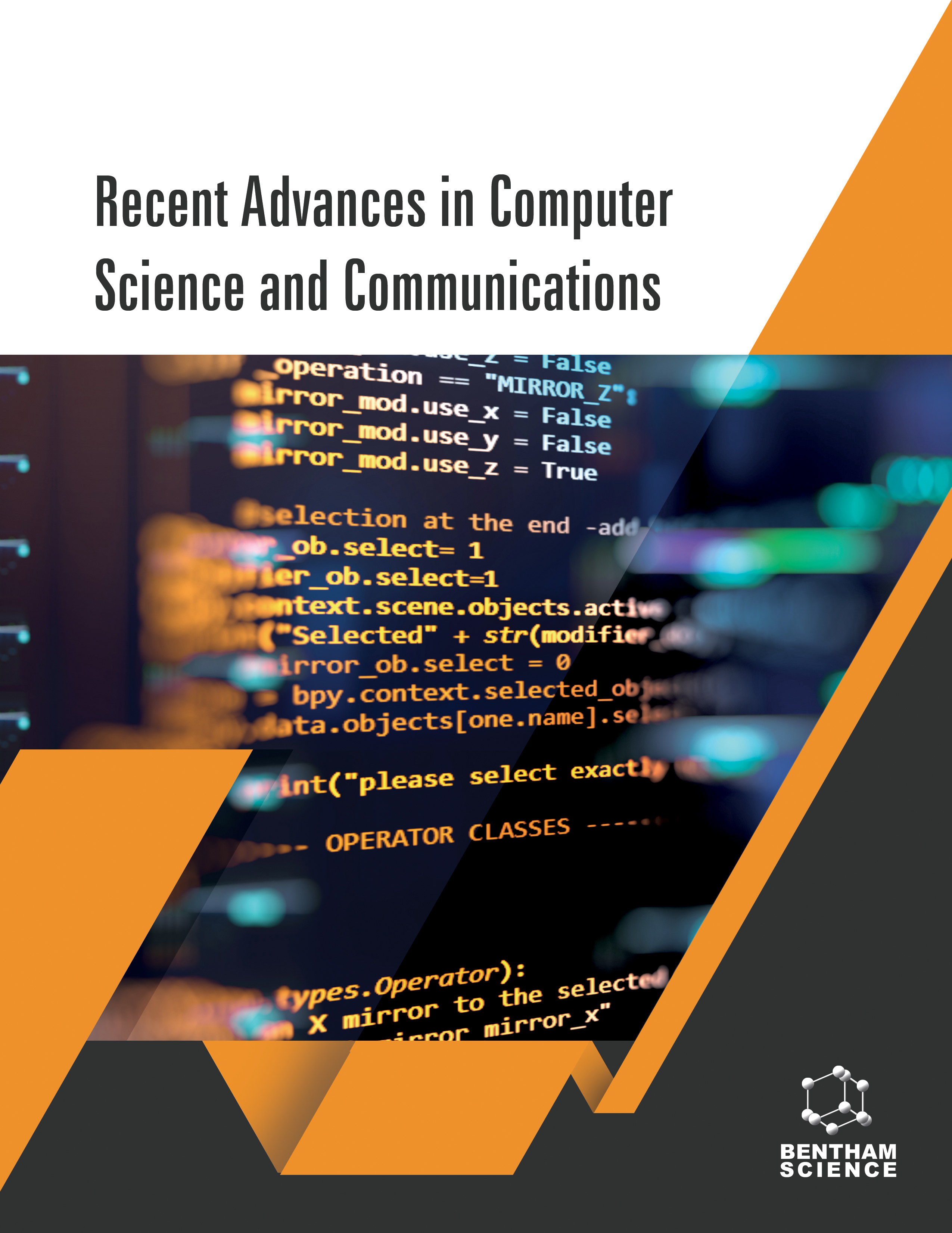- Home
- A-Z Publications
- Recent Advances in Computer Science and Communications
- Previous Issues
- Volume 17, Issue 8, 2024
Recent Advances in Computer Science and Communications - Volume 17, Issue 8, 2024
Volume 17, Issue 8, 2024
-
-
Study of Access Control Techniques on the Blockchain-enabled Secure Data Sharing Scheme in Edge Computing
More LessAuthors: Neha Mathur, Shweta Sinha, Rajesh K. Tyagi and Nishtha JatanaBackground: The pervasive adoption of edge computing is reshaping real-time big data analysis, smart city management, intelligent transportation, and various other domains. Its appeal lies in its distributed nature, decentralization, low latency, mobile support, and spatial awareness. However, this ubiquity exposes data to security threats, jeopardizing privacy and integrity. Consequently, access control assumes paramount impo Read More
-
-
-
Advancements in Data Augmentation and Transfer Learning: A Comprehensive Survey to Address Data Scarcity Challenges
More LessAuthors: Salma Fayaz, Syed Zubair Ahmad Shah, Nusrat Mohi ud din, Naillah Gul and Assif AssadDeep Learning (DL) models have demonstrated remarkable proficiency in image classification and recognition tasks, surpassing human capabilities. The observed enhancement in performance can be attributed to the utilization of extensive datasets. Nevertheless, DL models have huge data requirements. Widening the learning capability of such models from limited samples even today remains a challenge, given the intrinsic Read More
-
-
-
Diagnosis and Management System of Healthcare Resources for Pulmonary Cardio-vascular Diseases Based on Supervised Machine Learning
More LessIntroduction: The detection and management of diseases have always been critical and challenging tasks for healthcare professionals. This necessitates expensive human and material resources, resulting in prolonged treatment processes. In medicine, misdiagnosis and mismanagement can significantly contribute to mistreatment and resource loss. However, machine learning (ML) techniques have demonstrated the pote Read More
-
-
-
Target Signal Communication Detection of Black Flying UAVs Based on Deep Learning Algorithm
More LessAuthors: Yangbing Zheng and Xiaohan TuBackground: Unmanned aerial vehicles (UAVs) are being widely used in many fields, such as national economy, social development, national defense, and security. Currently, the number of registered UAVs in China is far less than that of flying UAVs-the frequent occurrence of unsafe incidents. Objective: The phenomenon of UAVs flying undeclared and unapproved has caused more serious troubles to social public orde Read More
-
-
-
An In-Depth Analysis of Collision Avoidance Path Planning Algorithms in Autonomous Vehicles
More LessAuthors: Keren L. Daniel and Ramesh Chandra PooniaPath planning is a way to define the motion of an autonomous surface vehicle (ASV) in any existing obstacle environment to enable the vehicle's movement by setting directions to avoid that can react to the obstacles in the vehicle's path. A good, planned path perceives the environment to the extent of uncertainty and tries to build or adapt its change in the path of motion. Efficient path planning algorithms are needed to all Read More
-
-
-
A Thorough Review of Deep Learning in Autism Spectrum Disorder Detection: From Data to Diagnosis
More LessAuthors: Manjunath R. Lamani and Julian Benadit PernabasBackground: Autism Spectrum Disorder (ASD) is a multifaceted neurodevelopmental condition with significant heterogeneity in its clinical presentation. Timely and precise identification of ASD is crucial for effective intervention and assistance. Recent advances in deep learning techniques have shown promise in enhancing the accuracy of ASD detection. Objective: This comprehensive review aims to provide an Read More
-
-
-
Schema Extraction in NoSQL Databases: A Systematic Literature Review
More LessAuthors: Saad Belefqih, Ahmed Zellou and Mouna BerquedichIntroduction: Nowadays, NoSQL databases have taken on an increasingly important role in the storage of massive data within companies. Due to a common property called schema-less, NoSQL databases offer great flexibility, particularly for the storage of data in different formats. However, despite their success in data storage, schema-less databases are a major obstacle in areas requiring precise knowledge of this schema, Read More
-
-
-
An Energy-efficient Routing Protocol Based on Elephant Herding Optimization in MANET
More LessAuthors: A. Dinesh and B.P. S. VigneshBackground: A mobile ad hoc network (MANET) is a collection of self-organizing mobile nodes creating an ad hoc network without fixed infrastructure. Routing is a major issue in mobile networks that may reduce network performance due to frequent network topology changes. Routing protocols are so important in dynamic multi-hop networks that many studies have focused on the routing problem in MANETs. M Read More
-
Most Read This Month
Article
content/journals/rascs
Journal
10
5
false
en


